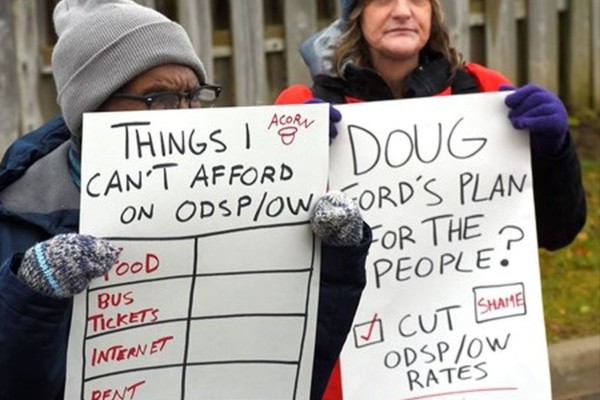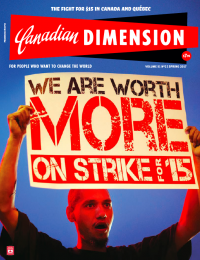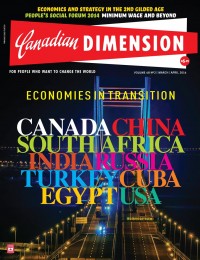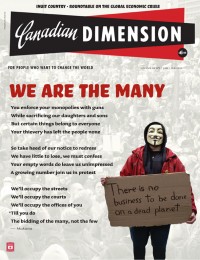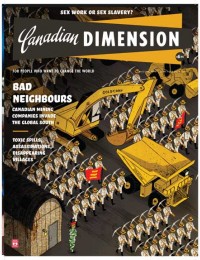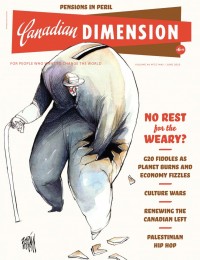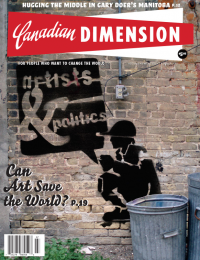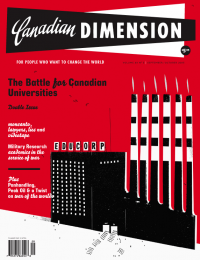The devastation of Manitoba: an autopsy of Pallister’s austerity regime
In this CD exclusive, James Wilt surveys the damage unleashed by Brian Pallister’s Progressive Conservatives

Manitoba Premier Brian Pallister has called a snap election for September 10, over a year before required under the province’s fixed election law.
It would be a mistake to think the abbreviated term served by the Progressive Conservatives was in any way less effective than if Pallister had waited until late next year to stage the vote. The Manitoba PCs have rammed through a barrage of major right-wing changes — service closures, funding cuts, privatizations, union-busting — during their brief stint as provincial overlords. Most have flown under the radar.
This article serves as a repository of many of these changes, roughly subdivided by issue. Following the priorities of the government, much of the focus will be on the impacts to healthcare. As many Dimension readers are aware, the litany of cuts to public funding initiated by the Pallister government will be felt for many years to come. This article, exclusive to CD, is the first attempt to analyze the full breadth of the Conservatives’ austerity regime in the province.
Healthcare
Deep and rapidly implemented changes to the healthcare system have been at the heart of the Pallister government’s obsession with “balancing the budget.”
Three of six emergency rooms (ERs) in Winnipeg have been closed: Victoria Hospital in 2017, and Seven Oaks Hospital and Concordia Hospital in 2019. Each was converted to a 24/7 urgent care centre designed to treat non-life threatening injuries and illnesses, with emergencies treated at the remaining three ERs (including an expanded ER at Grace Hospital). The Winnipeg Regional Health Authority (WRHA) distributed leaflets and erected billboards to inform patients about which centre they should visit: the WRHA’s vice-president told CBC that “there is hope that people will self-determine whether they should instead go to an urgent care centre.” Other similar facilities have been shut down, however. Five of six QuickCare clinics, intended to reduce crowding in emergency rooms, were shuttered in 2017. Misericordia Health Centre’s urgent care centre was also closed; many low-income residents in the area had previously relied on the centre for medical assistance relating to mental health and drug use. The shuttering of the Mature Women’s Centre in mid-2017 was described by the centre’s medical director as a “catastrophic blow to the provision of innovative health care for the women of Manitoba.” The St. Boniface Family Centre, a patient centre and teaching facility for family doctors that opened in 1973, was also shut down.
The overarching objective for the WRHA — the governing body for healthcare regulation for the city of Winnipeg, the Rural Municipalities of East St. Paul and West St. Paul, and the town of Churchill — for 2017-18 was to cut $83 million from its budget, representing a three percent budget cut. Another $36 million in planned cuts were unveiled for 2018-19, including costs reductions from laundry, food, patient beds, and staffing. A new organization titled Shared Health was introduced to take over service delivery responsibilities from the province, including the consolidation of services such as food, laundry, payroll, and clinical planning. That transition has resulted in significant cuts to the number of organizations, boards, bargaining units, and service purchase agreements. The leaders of both the provincial NDP and Liberals have argued this consolidation will impede transparency and accountability.
Significant capital funding to six proposed healthcare facilities was cut early in the government’s term, including $300 million for a CancerCare Manitoba expansion. A promise by the PCs in the 2016 election to fast track 1,200 new personal care home beds over eight years was abandoned, with funding for only 258 new beds announced. Elective surgeries at Thompson General Hospital were cancelled due to water damage to most of the hospital’s operating rooms, which critics said was the result of failure by the government to fund a roof replacement project.
Provincial coverage of test strips for people with diabetes was reduced, from 4,000 strips a year to only 3,650. Funding for the process of “compounding medication,” or adjusting it for a patient’s needs, was cut; a 74-year-old man with Parkinson’s disease found out that the necessary liquification of his medication was no longer covered, adding between $1,200 and $1,500 to his monthly costs.
Fees for seniors to use services run by Winnipeg’s health authority increased, with an adult day program doubling in price from $8.85 to $17.70. Costs of transportation and rehabilitation services for seniors run by the WRHA also went up. A $4.2 million program to incentivize medical students to work in rural areas was ended.
Universal health care for international students was repealed, adding between $2,400 and $3,600 in potential annual costs for students — who already pay much higher tuition rates. As a result, international students who become seriously or terminally ill will have to return to their country of origin or risk losing their private insurance.
Rumours of privatization of healthcare services started early. In 2016, only a few months after getting elected, the province’s health minister floated the idea of private MRI and CT scans. In mid-2017, the health authority privatized outpatient physiotherapy and occupational therapy; in both cases, experts and patients warned that quality of service would be compromised. “You’re picking on the sick people, and I don’t understand that at all,” said one patient about the loss of public occupational therapy. A “mixed model” home-case program introduced by the WRHA saw two-thirds of $15.7 million in funding over the next three years go to private companies.
Audiologists and recreation therapists at the Health Sciences Centre were laid off. More than a dozen nurses with expertise in burns, trauma, and intravenous insertions were cut. A key lactation counselling program that helped new parents breastfeed their newborns was eliminated, rolling the duties into the regular responsibilities of nurses. Laundry workers at a WRHA facility in Selkirk face an uncertain future, potentially having to reapply for their positions at a consolidated centre. In June, 237 nurses at Seven Oaks Hospital were laid off in preparation for the closure of the ER, and were invited to reapply for positions at the urgent care centre.
Ambulance funding for Winnipeg was frozen at 2016 levels. Eighteen rural ambulance stations were shut down, prompting the mayor of a small municipality in southwest Manitoba to say: “it’s disturbing for getting to people in a timely nature.” Advanced care paramedics in the Interlake-Eastern Regional Health Authority were halted from administering critical airway treatments and pediatric cardiac procedures that they have been trained and licensed for, the result of reorganization of rural healthcare service.
CUPE members strike against sweeping cuts to ERs, Urgent Care centres, and other hospital programs in Winnipeg. Photo from CUPE.ca.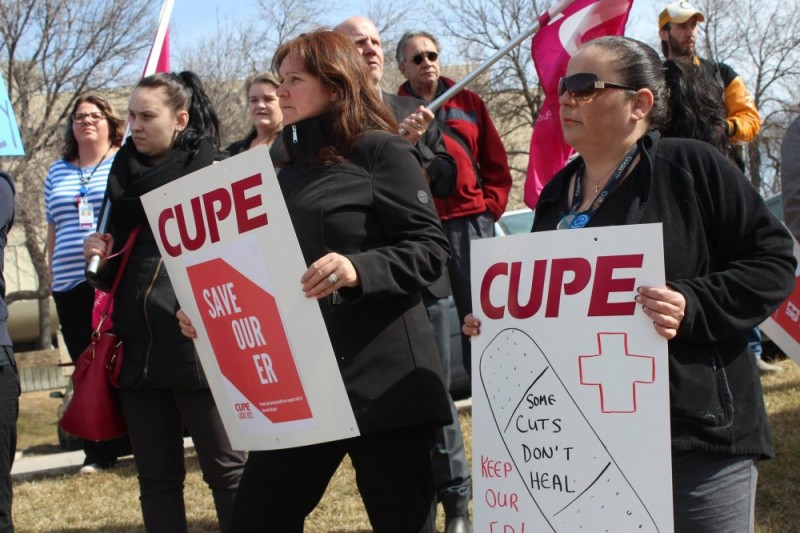
Small travel subsidies for companions of predominantly Indigenous patients flying from Northern Manitoba were eliminated, saving the province an estimated $1 million a year. In October 2018, a 58-year-old man from Nisichawayasihk Cree Nation died on a Greyhound bus while travelling from Thompson to St. Boniface Hospital for an appointment after receiving heart stents. He wasn’t offered a flight for the trip and was denied a travel companion.
The closure of ERs and urgent care centres resulted in a significant spike in mandatory overtime worked by nurses, rising from 328 mandated shifts in 2017 to 511 mandated shifts only halfway through 2018. In total, overtime hours worked by nurses increased by 32 percent between 2017 and 2018 — and 71 percent for critical care nurses.
Over 40 critical incidents occurred between October and December 2017, including the wrong patient undergoing a lumpectomy for breast cancer, which the head of the Manitoba Nurses Union attributed to overwork and lack of resources. In June of 2019, St. Boniface Hospital shut down its admission of patients with non-life threatening injuries or illnesses for almost 24 hours, with a veteran emergency room doctor attributing it in part to the conversion of Concordia’s ER into an urgent care centre. That same day, a 63-year-old woman died in St. Boniface Hospital after waiting for potentially life-saving surgery for four hours. Her daughter told CBC: “Her heart had no more blood in it when they opened it up. They had left her sitting there bleeding out for hours in the emergency room.”
In early 2019, WRHA’s president acknowledged the “valley of despair” being experienced by many healthcare workers. A poll published in May indicated that 38 percent of Winnipeggers think healthcare service has declined, while 48 percent think it has stayed the same and only seven percent thinking it has improved. Forty-eight percent of First Nations people think it has got worse. Peachey, the author of the healthcare review, acknowledged the government may need to delay the implementation of ER closures at Seven Oaks and Concordia. A subsequent report by Peachey of the transition found that “confidence is lost” and that nurses are experiencing “unknown levels of stress” and “deep-seated unhappiness.” From 2017 to 2018, the number of nurses working in the province decreased by 550, from 16,622 to 16,065.
In August, healthcare workers were forced to vote for new union representation following the consolidation of bargaining units from 190 to 36. The Canadian Union of Public Employees (CUPE) won the most votes, representing eight units, while the Manitoba Government Employees Union (MGEU) won five units. However, MGEU lost about 8,600 members in the process. The union’s president described the process as: “It was a way to try and just create chaos within the union lives. They pitted union against union.”
Plans to turn Concordia into a walk-in clinic were eventually scrapped, with the province opting for an urgent care centre to take its place. Several rallies were hosted by nurses and supporters outside the Legislature in 2018 and 2019, demanding an end to the cuts. In August, another rally was held calling for more funding in Northern healthcare, allowing people to stay in their communities for medical procedures.
Somewhat ironically, many of these proposals were explicitly recommended by a Nova Scotia-based consultant hired by the previous NDP government. In 2015, Dr. David Peachey was paid “more than $1 million” to write a review of the healthcare system. Another guiding report was written by accounting firm KPMG; a member of that consulting team became chief operating officer of Health Sciences Centre Winnipeg in 2017.
Climate and environment
Initially, it looked as if Pallister might be an aberration on the climate front amongst conservative leaders when he hired renowned climate policy analyst David McLaughlin as the party’s campaign manager and eventual climate change adviser. But such initial signals of good intent were quickly abandoned, with the government failing to produce its climate plan until late 2017. Rather than follow the federal government’s guidelines for carbon pricing that would hit $50/tonne by 2022, Manitoba opted to implement a flat $25/tonne that wouldn’t increase over time, but instead find other alleged emissions reductions alternatives. Agriculture, which accounts for one-third of the province’s emissions, was exempted. That left transportation and stationary combustion (the heating of residential and commercial buildings) that would be subject to the relatively low carbon price — and transportation is a notoriously resistant sector to such policy measures. But it was something: considerably more than what was being proposed by conservative parties in other provinces.
In October 2018, the province announced that it was cutting out carbon pricing from its Climate and Green Plan. Environmental sociologist Mark Hudson wrote about the decision:
If the ‘Climate and Green Plan’ is the sum total of Manitoba’s response—and so far it seems to be—it represents an epic, even catastrophic failure of such leadership. If we are in a fight with climate change, we’re sending a kindergartener out against a title fighter, and should only expect a beating.
A poll conducted in late 2018 found that only 24 percent of residents trust the province’s information about climate change. Responding to the polling data, Pallister said that it’s “too bad” and argued that Manitoba should be receiving credit for its massive hydroelectric capacity (which is the point of carbon pricing: to reward and incentivize low-carbon production). In 2017, the government paid a University of Manitoba law professor about $40,000 to prepare expert advice about the constitutionality of a federally mandated carbon price, with the scholar confirming that it is indeed constitutional. At the time, Pallister summarized the advice as: “If we go to court, we lose” and said “I certainly did not want to waste a bunch of Manitoba taxpayers’ hard-earned money going to Supreme Court and losing.”
In April 2019, Pallister announced that the Manitoba government would be suing the federal government over the federal carbon pricing backstop, which requires provinces to either introduce a $50/tonne price or prove that alternative measures can substitute for that policy. The Court of Appeal in both Ontario and Saskatchewan has already ruled the federal backstop as constitutional. McLaughlin now spends most of his time on Twitter fear-mongering about the NDP’s carbon pricing plan. Manitoba’s emissions are projected to continue rising through 2020 and 2030.
In 2017, the Manitoba government ended the long-standing 50-50 funding arrangement with Winnipeg Transit — which saw the province cover half of the agency’s operating costs not covered by fares — and froze funding at 2016 levels. Public transit such as buses and trains is a far more efficient means of passenger transportation, especially when electrified. Transportation emissions make up 33 percent of the province’s carbon pollution. An October 2018 poll indicated that 79 percent of adults in Winnipeg want the 50-50 deal to be reinstated by the province.
The withdrawal of Greyhound service from Western Canada has also undermined the ability for people to use intercity buses, particularly in remote, rural, and Northern communities. The PCs have repeatedly stated they won’t offer subsidies for intercity buses, let alone introduced a public option. The province eliminated the Motor Transport Board, which used to be responsible for regulating intercity routes. In response to the latest loss of bus service between Selkirk and Winnipeg, a provincial spokesperson said: “Manitoba ceased support for both charter and scheduled bus services operating in Manitoba when the Motor Transport Board dissolved on March 1.” This loss of regulation has resulted in dangerous intercity bus conditions, including a 10-hour overnight trip in the wintertime with an open door that required passengers to cover themselves in blankets.
In late 2018, the province privatized forest firefighting services, including water bombing. While Manitoba will continue to own the water bombers, it will lease them to the private company that is now contracted to contain fires. NDP leader Wab Kinew observed at the time that the province would end up spending more money on the private option than if it had kept it under public control.
Manitoba Hydro is facing potential privatization threats from the province, according to critics. The PCs appointed Gordon Campbell, former premier of British Columbia who previously led the partial privatization of BC Hydro, to review the megaprojects of Keeyask Generation Project and Bipole III Transmission. In February, Campbell was relieved of his duties following allegations of sexual assault. When Campbell was initially hired, Lynne Fernandez of the Canadian Centre of Policy Alternatives wrote that it is “important to remember that Ontario’s PC leader, Mike Harris, set the selloff up when he divided the utility into three separate divisions, a strategy Campbell followed in BC.”
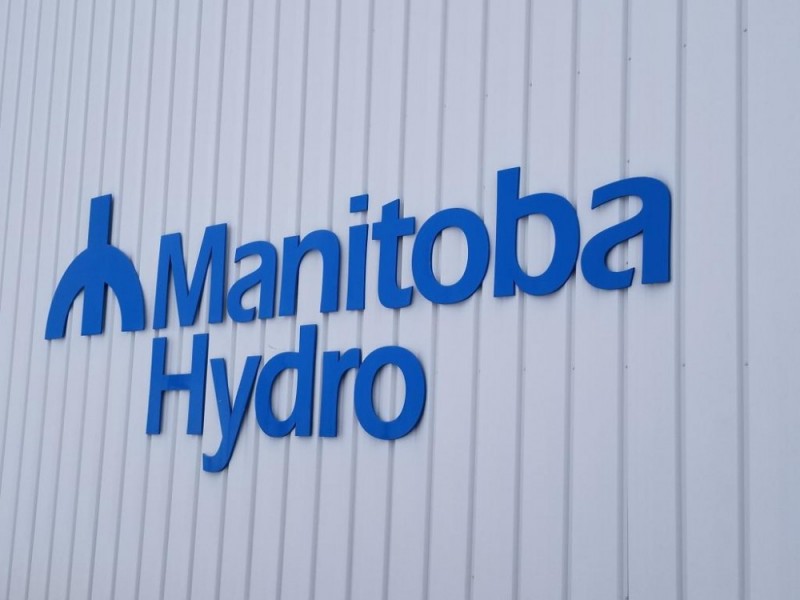
In May, the provincial government awarded an environmental license to a proposed silica sand extraction project — which will ship the sand to be used in fracking operations—despite significant public opposition about potential impacts to air quality and groundwater. Concerns have also been voiced by environmental groups about the expansion of mining exploration in provincial parks and destruction of wetlands for development.
Harm reduction, policing, and prisons
While it didn’t get much attention at the time, the privatization of phone calls in Manitoba’s jails was in retrospect a sign of things to come. Previously, prisoners could call friends and loved ones for free. But in late 2016, the new conservative government outsourced phone calls with a five-year contract to Synergy Inmate Phones, a private company based in Texas. From then on, prisoners had to pay a flat rate of $3 per 15-minute phone call. A family member of a prisoner told CBC: “We’re going to have to drastically reduce the amount of time that he spends on the phone.” The new private service had near-immediate impacts on the quality of calls, with lawyers complaining that calls with their incarcerated clients were being cut off, that voicemails were more difficult to leave, and that the video chat service at Milner Ridge had crashed for two weeks.
Photo courtesy the US Department of Agriculture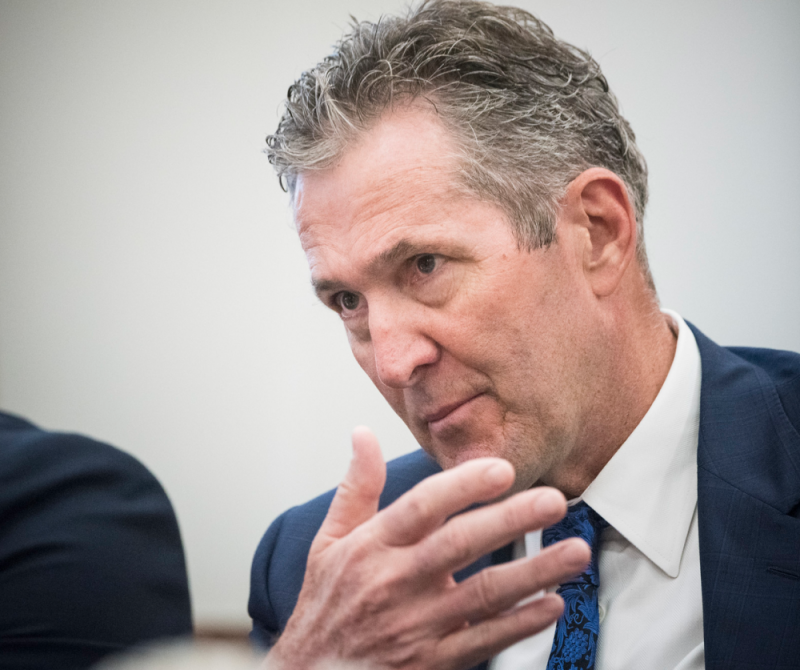
Between 2016 and 2018, drug crimes in Winnipeg have increased by 15 percent. The province has effectively refused to introduce any kind of harm reduction measures to provide a safe supply of drugs and reduce overdose deaths with safe consumption sites and other measures. A 2018 poll found that 69 percent of Winnipeggers support a safe injection site. That call was echoed by drug users and health workers in an April 2019 survey conducted by the WRHA and harm reduction organizations, finding that more than 80 percent of users are “likely or very likely” to use a safe injection site. As reported by CBC:
The report noted the greatest source of harm in their lives was not the drugs but the world surrounding them, such as criminalization, imposed family separation and the stigma related to drug use. Users also want safe spaces to sleep, eat and socialize in, since more than 50 per cent of the people surveyed did not have a place to call home.
When presented a copy of the report in question period, Pallister tossed it on the ground behind him. Pallister also suggested that B.C. Premier John Horgan had told him that safe consumption sites come with “unintended consequences,” which a spokesperson for Horgan denied. Manitoba Heath Minister Cameron Friesen said about the study that the 38 participants “wanted snacks” and “we do not believe that would be the basis on which to draw conclusions about the safety of such meth injection sites, which are not called for by any expert.” Two days later, CBC published an interview with medical officer of health Joss Reimer who confirmed that safe consumption sites are strongly supported by evidence and that they “reduce risks of overdose, connects people to the system, gives them a space where they can feel safe to connect with their peers as well as with the system.” Safe consumption sites can also reduce the number of needles dispensed in public, a concern that has been used to justify airport-like security measures at Winnipeg’s downtown Millennium library and has required community groups like Bear Clan to pick up hundreds of needles at a time. In April, it was revealed that Manitoba had received $4.1 million from the federal government to fund addictions treatments for people using meth, but hadn’t spent it.
Following the legalization of cannabis, the provincial government rolled out an extensive marketing campaign that warned of the dangers of using the drug. These PSAs were criticized by a nursing professor at the University of Manitoba, who claimed they are promoting unfounded fears over proven harm reduction.
Still image from one of the provincial government’s ‘harm-reduction’ PSA videos showing a skull above an ‘X’ formed out of two joints. Source: Manitoba Government.
The Manitoba government has responded to the alleged “meth crisis” by increasing policing powers. In March, the province legislated a new iteration of security guard who can detain people and patrol hospitals, universities, and liquor stores. Pallister told media that he had experienced “confrontational situations” in downtown Winnipeg that serve as “an indication of what we have to address,” pointing to the controversial sale of Portage Place mall and the removal of a large bus stop which the police claimed had served as a popular site for crime as positive examples of change.
During the ongoing campaign, the Progressive Conservatives announced that they would spend $10 million to reduce crime in the city’s downtown, including cracking down on drug use and preventing panhandling. In March, University of Winnipeg criminal justice professor Bronwyn Dobchuk-Land told CBC Manitoba host Ismaila Alfa: “So I think we need to, first of all, call the crisis what it is: we have a housing crisis, we have a lack of income crisis, a welfare crisis, a remand crisis, we have a crisis of over-surveillance and under-support. And I think we’re reaching a crisis of too much policing. There’s actually a point at which increasing security and increasing policing makes people’s lives less stable and I think we need to take that seriously in Winnipeg.”
Labour
University of Manitoba Faculty Association (UMFA) members went on strike Nov. 1, 2016 after bargaining with U of M administration stalled. Image courtesy The Manitoban.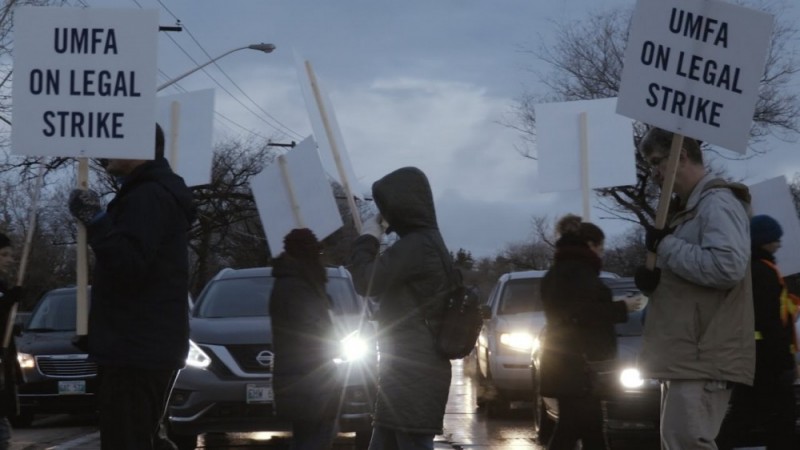
During the UMFA strike, the provincial government eliminated long-standing card check certification that meant that automatic union certification was issued if 65 percent of workers signed union cards, replacing it with a secret ballot process that dropped the threshold to 50 percent but allowed employers extra time to interfere or intimidate workers from unionizing. The president of MGEU explained at the time: “Forcing workers to vote on union certification after they have already indicated their decision allows the employer time to obstruct their choice through intimidation and coercion.” PressProgress reported that the number of failed union drives tripled since the change.
The province implemented a two-year wage freeze for all public employees, which unions argue undermines their collective bargaining rights. A coalition of public sector unions are now suing the province for the legislation. As explained in the healthcare section, the province forced a consolidation of bargaining units onto workers. Many public employees have faced buyouts or contracting out of their jobs. Over 800 workers of Manitoba Hydro took voluntary buyouts, leading a representative for International Brotherhood of Electrical Workers Local 2034 to explain “shortcuts are being developed to keep pace with increasing demands, and the necessary focus on ‘safety’ is gradually getting lost.”
In 2019, the province instructed Crown corporations including Manitoba Hydro, Manitoba Liquor and Lotteries, and Manitoba Public Insurance to cut its workforce by another eight percent, following orders in 2016 to cut management by 15 percent. Seasonal road work started to be increasingly contracted out by the province in 2019, with MGEU estimating that 150 government jobs of various kinds were being privatized including in the provincial tree nursery and French translation services. The PCs have proposed a bill that would outsource conciliation and grievance mediation services to the private sector, but the NDP delayed its passage until the fall session. Another delayed bill seeks to end project labour agreements on public construction projects.
Housing and social supports
Winnipeg has long been considered one of the most affordable cities to live in, however this has been changing rapidly in recent years. Between 2013 and 2016, shelter costs increased by 24.8 percent for two-parent, two-children homes. In total, 21 percent of households in Winnipeg are living in unaffordable housing — paying 30 percent or more of income on shelter — with 39.5 percent of renters in that situation. Exactly 50 percent of renters in Winnipeg are in housing that falls short of at least one standard: affordability, adequacy, or suitability. A minimum wage earner in Manitoba needs to work 63.7 hours a week to afford a one-bedroom apartment, or 40 hours at $18.08/hour. The minimum wage in Manitoba is currently $11.35/hour, up from $11 in 2015. That means the minimum wage has effectively decreased due to inflation. Provincial child care funding has been capped since 2016, representing another regressive barrier for low-income families.
In July 2017, the Progressive Conservatives increased the income threshold for Rent Assist, meaning that recipients have to pay 28 percent of their income to rent, rather than 25 percent. That removed 150 households from Rent Assist. Later that year, the government increased the amount that residents of Manitoba Housing are required to pay, again from 25 percent to 28 percent. Public housing tenants cannot access Rent Assist. The PCs raised the Rent Assist threshold from 28 percent to 30 percent of income in mid-2018. A year later, Rent Assist for single low-income adults was frozen. It also cut a $25/month allowance for people on Employment and Income Assistance (EIA) to help seek employment. In 2017, people on EIA lived on between 58 and 68 percent of poverty line income. Anti-poverty activists voiced serious concern about the province’s restriction of EIA recipients using the Canadian Charter of Rights and Freedoms to appeal cases.
In 2017, accounting firm KPMG recommended the overhaul and privatization of social housing in Manitoba. Photo by Wayne Glowacki/Winnipeg Free Press.
In June, the PCs finally signed a housing deal with the federal government, following a Liberal MP and parliamentary secretary who works on urban affairs telling a radio show months earlier: “We have a Manitoba government that is refusing to take federal dollars to house people.” He also identified during the June announcement: “”You cannot spend half an hour on the housing conversation in Manitoba, let alone 10 minutes, without understanding the child welfare system.”
Pallister’s party certainly didn’t leave that untouched, either. In early 2019, it cut and capped daily service fees to foster parents of young adults between the ages of 18 and 21, with one family profiled by CBC reporting that their funding would plummet from $60 per day to $20 per day. The government replaced a previous child welfare funding formula with a block funding arrangement, which critics have suggested will result in cuts. A specialized child welfare unit to assist newcomers was shut down in April by the province.
The province has administered significant cuts to several key community organizations, including the North Point Douglas Women’s Centre and the North End Women’s Centre. It rejected a proposal for a 24-hour safe space for LGBTQS2 women; the West End 24/7 Safe Space continues to face uncertain funding. In its 2019 budget, the PCs ended the renowned Neighbourhoods Alive! program that funded community organizations in low-income neighbourhoods, replacing it with a program that reportedly excludes communities in greatest need.
Even before the program was ended, many organizations that benefited from Neighbourhoods Alive! faced reduced funding, including the laying off of six employees and reduced programming at the Daniel McIntyre/St. Matthews Community Association in 2017. Shauna MacKinnon, professor and chair of the University of Winnipeg’s department of urban and inner-city studies, wrote in a post-mortem: “NA! was a flagship initiative introduced by the NDP government in 2000 and is known widely as part of the ‘NDP brand.’ The Pallister government began to chip away at NA! soon after it took office, and the decision to eliminate it is purely political. No government likes initiatives associated with the government that preceded it.”
Education
Like with its war against labour unions, the PCs’ approach to the education file has received little attention outside of a few select organizations. Its impacts have been severe.
In early 2017, the province announced that it was eliminating legislation that restricted K-3 classroom sizes to 20 students. As local writer Liz Kessler explained, emphasizing its impacts on students with learning disabilities: “Larger classes are problematic. They make classroom management more difficult for teachers particularly by allowing them less time to spend with individual students and get to know them. It makes it harder for them to intervene in conflict between children and put a stop to bullying. More stress also means teachers likely aren’t performing at their best.”
Schools have been the recipients of repeated cuts by the province failing to match inflation with funding increases, while Education Minister Kelvin Goertzen said that any school division that raises taxes above a two percent cap will have the equivalent amount reduced in administrative funding. The province’s increase of funding for elementary and high schools by only 0.5 percent in 2019-20 meant that most school boards received less than they did the previous year, with a vice-chair for the Winnipeg School Division calling the PCs “a government that doesn’t want to invest in education.” Additionally, the province closed the Manitoba Curriculum Support Centre that served as a library for teachers, with 80 percent of its content available only in print.
In early 2019, the Manitoba government announced it was advancing its goal of educational reform by hiring a consultant whose recommendations recently resulted in Nova Scotia abolishing elected school boards. The commission appointed by the province to review K-12 education has been criticized for failing to include representation from newcomers or people with disabilities.
Universities and colleges haven’t avoided such harms. In March 2017, the PCs introduced legislation to allow tuition hikes at post-secondary institutions of five percent per year plus inflation. A month later, in its budget, the government eliminated the Tuition Fee Income Tax Rebate and Advance Tuition Fee Income Tax Rebate that had encouraged graduates to remain in Manitoba with a 60 percent tuition tax rebate over six years. The chair of the Canadian Federation of Students’ Manitoba chapter said the situation was “trying to slay the deficit on the backs of students.” The PCs administered cuts to post-secondary funding in 2018 and 2019. Post-secondary tuition in Manitoba rose by 6.5 percent in 2018, almost double the national average. In 2019, the government cut Access programs that were designed to make post-secondary education more viable for Indigenous and Northern students, and eliminated $1.6 million in bursaries. Just before the writ was dropped, Pallister faced accusations that he had influenced the decision by Red River College not to renew the contract of its popular president, with alleged motivations including the fact that the president was a former NDP staffer and that the Red River board was stacked with PC appointees.
Austerity measures have already started to be unleashed on the education system, both K-12 and post-secondary. But the major cuts will likely come in the second term if the PCs win again, akin to ongoing “modernization” efforts in Ontario under Premier Doug Ford. The final report of the commission reviewing the school system will be published in early 2020. Given the emphasis the government has placed on cutting school boards and its chosen appointees — including Janice MacKinnon, who served in Ray Romanow’s Saskatchewan NDP government in the 1990s and administered massive changes including closing over 50 rural hospitals, ending a children’s dental plan and universal prescription drugs, and gutting funding to schools and universities. While the first term of the PCs was marked by a breakneck reconfiguration of healthcare, the seeds have already been sown for the same to occur to education in its second term.
Other issues
Disabilities: The provincial government did not renew $50,000 in core funding for the Manitoba League of Persons with Disabilities, forcing the organization to lay off workers and reduce remaining staff to part-time hours. It also loosened the requirement for businesses who employ fewer than 50 people to write down accessibility policies or provide public documentation of such procedures.
Migrants, refugees, Palestine: In late 2016, the PCs announced that it was introducing a $500 fee for successful applications to the province’s popular Manitoba Provincial Nominee Program (MPNP), which many critics compared to a head tax. Additionally, the province adjusted the criteria for candidates to only those who have been sponsored by an employee or meet “priority labour market requirements,” which was criticized for undermining family connections and opening up workers to exploitation by employers. The Islamic Social Services Association lost $110,000 in funding from the province for a pilot prevention program to help Syrian refugees in Winnipeg. In April 2019, the province’s deputy premier Heather Stefanson joined with Winnipeg’s mayor to condemn Palestinian-American activist Linda Sarsour’s speaking appearance in the city, equating all criticism of Israel with antisemitism.
Municipalities: Pallister faced considerable condemnation from residents of Churchill for refusing to intervene in the protracted standoff between OmniTRAX and the federal government after a devastating flood wiped out the rail line to the small Northern town in mid-2017. Similar sentiments have been expressed in Thompson, the fourth largest municipality in the province, whose mayor was unable to secure a meeting with Pallister to discuss major economic challenges resulting from impending mine closures and layoffs. The province has refused to dispense money to Thompson from the Mining Community Reserve Fund despite the loss of 400 mining jobs in 2018 and the payment by mining towns into the fund. In May, the province published a report based on interviews with dozens of unnamed stakeholders in property development alleging that development permitting and approvals are too slow in Winnipeg, leading to fears that the province may move to overrule the city’s decision making powers.
David Chartrand, president of the Manitoba Metis Federation. Photo by Sean Kilpatrick/CP.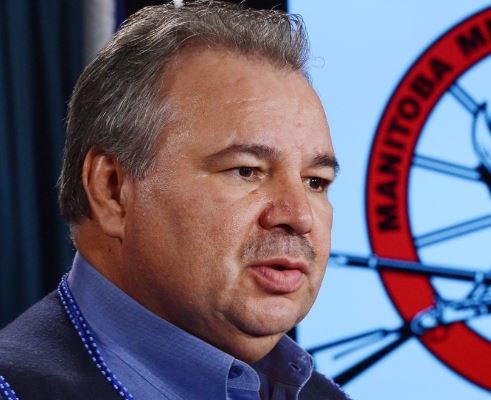
Agriculture: The PCs were criticized in 2017 for loosening regulations around the spreading of hog manure, which could lead to public health hazards like E.coli. A massive fire earlier this month that killed 800 cows in a barn near Steinbach was attributed in part to the province’s repealing of farm building code regulations in 2017.
Tax cuts and rich men
The Progressive Conservatives have built their entire 2019 electoral campaign around tax cuts. In its 2019 budget, the province cut its sales tax from eight percent to seven percent, spending $173,000 in a marketing campaign to promote the cuts — with billboards disproportionately erected in NDP and Liberal ridings. Since July, the party has pledged to eliminate the PST on home and renters’ insurance, haircuts over $50, probate fees and wills, and the filing of taxes.
The province pledged up to $11.95 million in tax rebates for True North Square, a joint venture between companies owned by the richest family in Manitoba and the patriarch of the richest family in Canada. The PCs also wrote off an $82 million loan owed by the owners of the Winnipeg Blue Bombers’ IGF Stadium, which they had previously criticized the NDP for subsidizing.
Pallister owns a $2 million, 9,000 square foot mansion in Winnipeg. He also owns a 3,400 square foot hillside vacation home in Costa Rica, which he spent 128 days at during his three-year premiership, and recently paid $8,000 in back taxes and penalties for after failing to have it reassessed and breaking property tax rules.
Please contact CD’s web editor if you would like to suggest additions. The Canadian Centre for Policy Alternatives is currently conducting a survey for its 2020 Alternative Provincial Budget, if you would like to have a say in the process.
James Wilt is a freelance journalist and graduate student based in Winnipeg. He is a frequent contributor to CD, and has also written for Briarpatch, Passage, The Narwhal, National Observer, Vice Canada, and the Globe and Mail. James is the author of the recently published book, Do Androids Dream of Electric Cars? Public Transit in the Age of Google, Uber, and Elon Musk (Between the Lines Books). He organizes with the police abolitionist organization Winnipeg Police Cause Harm. You can follow him on Twitter at @james_m_wilt.









